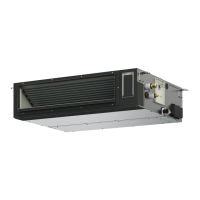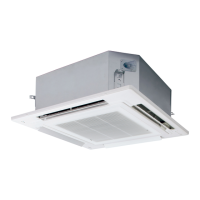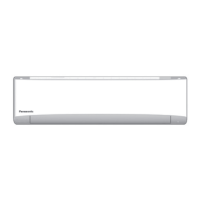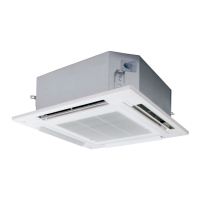7
REMOVAL AND EVACUATION
CAUTION
• When breaking into the refrigerant circuit to make repairs – or for any other
purpose – conventional procedures shall be used.
However, it is important that best practice is followed since flammability is a
consideration.
The following procedure shall be adhered to:
•
Remove refrigerant.
•
Purge the circuit with inert gas.
•
Evacuate.
•
Purge again with inert gas.
•
Open the circuit by cutting or brazing.
• The refrigerant charge shall be recovered into the correct recovery cylinders.
•
The system shall be “flushed” with Oxygen free nitrogen (OFN) to render the unit safe.
• This process may need to be repeated several times.
• Compressed air or oxygen shall not be used for this task.
• Flushing shall be achieved by breaking the vacuum in the system with Oxygen free
nitrogen (OFN) and continuing to fill until the working pressure is achieved, then
venting to atmosphere, and finally pulling down to a vacuum.
• This process shall be repeated until no refrigerant is within the system.
• When the final Oxygen free nitrogen (OFN) charge is used, the system shall be
vented down to atmospheric pressure to enable work to take place.
• This operation is absolutely vital if brazing operations on the pipe work are to take
place.
• Ensure that the outlet for the vacuum pump is not close to any potential ignition
sources and there is ventilation available.
CHARGING PROCEDURES
NOTE:
Refer to the Installation Instructions attached to the outdoor unit.
DECOMMISSIONING
CAUTION
• Before carrying out this procedure, it is essential that the technician is completely
familiar with the equipment and all its details.
• It is recommended good practice that all refrigerants are recovered safely.
• Prior to the task being carried out, an oil and refrigerant sample shall be taken in
case analysis is required prior to re-use of recovered refrigerant.
• It is essential that electrical power is available before the task is commenced.
a) Become familiar with the equipment and its operation.
b) Isolate system electrically.
c) Before attempting the procedure ensure that:
•
Mechanical handling equipment is available, if required, for handling
refrigerant cylinders.
•
All personal protective equipment is available and being used correctly.
•
The recovery process is supervised at all times by a competent person.
01_311814_EU_Eng.indb 9 2019/11/27 9:51:07
SM830283-00_欧州向け R32シングル36-71形TD&SM.indb 7 2020/01/29 21:46:01

